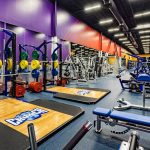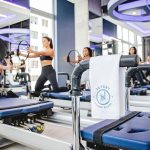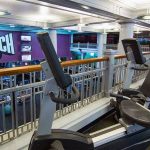Saks Inc., which recently announced plans to merge with Hudson’s Bay Company, recorded a net loss of $19.6 million, or 13 cents per diluted share, in the second quarter. The
results included after-tax charges totaling $5.2 million comprising $1.1
million of store closing costs, a $1.6 million non-cash pension
settlement charge related to the payment of excess lump-sum
distributions, and $2.5 million of expenses related to the pending
merger with HBC.
Excluding these items, the Company would have recorded a
net loss of $14.4 million, or $.10 per share, for the second quarter
ended August 3, 2013.
For the prior year second quarter ended July
28, 2012, the Company recorded a net loss of $12.3 million, or $.08 per
diluted share. The results included after-tax charges totaling $4.3
million comprising $1.5 million of pre-opening costs associated with the
Company’s new Tennessee fulfillment center and $2.8 million of asset
impairments and store closing costs. Excluding these items, the Company
would have recorded a net loss of $8.0 million, or $.05 per share, for
the second quarter ended July 28, 2012.
Sales grew 0.5 percent to $707.8 million with comps ahead 1.5 percent.
For the six months ended
August 3, 2013, the Company recorded net income of $0.4 million, or $.00
per diluted share. The results included after-tax charges totaling
$15.3 million comprising $3.4 million of store closing costs, a $7.8
million non-cash loss on extinguishment of debt related to the Company’s
redemption of its $230 million 2 percent Convertible Senior Notes, a
non-cash $1.6 million pension settlement charge, and $2.5 million of
expenses related to the pending merger with HBC. Excluding these items,
the Company would have recorded net income of $15.7 million, or $.11 per
share, for the six months ended August 3, 2013.
For the prior year
six months ended July 28, 2012, the Company recorded net income of $19.8
million, or $.13 per diluted share. The results included after-tax
charges totaling $4.8 million comprising $1.8 million of pre-opening
costs associated with the Company’s new Tennessee fulfillment center and
$3.0 million of asset impairments and store closing costs. Excluding
these items, the Company would have recorded net income of $24.6
million, or $.16 per share, for the six months ended July 28, 2012.
Comments on the Second Quarter and Six Months Ended August 3, 2013
Stephen
I. Sadove, Chairman and Chief Executive Officer of the Company, noted,
“While the second quarter was our fourteenth consecutive quarter of
posting a comparable store sales increase, our sales growth was modestly
below our expectations. This shortfall contributed to our second
quarter year-over-year gross margin rate decline and SG&A expense
deleverage.”
“Our comparable store sales increases of 1.5 percent in
the second quarter and 3.8 percent for the six months were on top of 4.7
percent increases in both the second quarter and first six months of
last year. Several merchandise categories showed sales strength during
the second quarter, including women’s contemporary and advanced designer
apparel; dresses; women’s shoes; handbags; fragrances; children’s
apparel; and men’s accessories, shoes, and contemporary apparel,” Sadove
continued.
The fiscal year ended February 2, 2013 included an extra
week, creating a 53-week fiscal year that occurs every six years in the
accounting cycle for many retailers, versus a 52-week fiscal year in
other years. This 53rd week and later fiscal year end has pushed each of
the quarter ends in 2013 later than in the prior year and is distorting
certain comparisons. Adjusting for this distortion (comparing the
periods ended August 3, 2013 with the periods ended August 4, 2012),
management estimates that the current year second quarter and
year-to-date comparable store sales increases would have been
approximately 4.0 percent and 4.1 percent, respectively. On this basis,
the New York City flagship store sales performance was better than the
comparable store sales performance of the Company’s Saks Fifth Avenue
stores in the aggregate for the quarter.
For the second quarter, the
Company’s gross margin rate was 36.6 percent compared to last year’s
second quarter rate of 37.2 percent. For the six months, the gross
margin rate was 40.7 percent compared to 40.9 percent in the first six
months of last year. Sadove commented, “Our gross margin deterioration
in the second quarter was principally due to higher levels of markdowns
in men’s, women’s shoes, and handbags. Sales in these areas were
meaningfully above the Company average but fell below our level of
inventory investments in these categories. Consequently, we incurred
higher year-over-year markdowns as we progressed through our normal
second quarter clearance period. In addition, we delayed the start date
of our annual end-of-spring-season clearance sale, and in hindsight, we
believe this negatively impacted our sales and gross margin performance
for the quarter.”
As a percent of sales, SG&A expenses (excluding
the certain items) were 28.8 percent in the second quarter this year
compared to 27.1 percent in the prior year second quarter and 27.7
percent for the current year six months compared to 26.1 percent for the
same period last year. As anticipated, the Company experienced
deleverage in the quarter and six months primarily related to
incremental expenses needed to support its omni-channel and Project
Evolution (technology) initiatives and its planned launch of
saksoff5th.com, as well as additional marketing expenses targeted to
maximize omni-channel revenues. Additionally, the Company’s saks.com
sales continued to outpace its store sales, and these online sales carry
a higher level of SG&A expenses. As the saks.com sales penetration
increases, it is creating some natural SG&A expense deleverage for
the Company.
Furthermore, weaker than expected second quarter comparable
store sales caused additional deleverage.
Excluding the
aforementioned certain items, the Company’s operating loss was 3.4
percent of sales in the current year second quarter compared to an
operating loss of 1.0 percent of sales in the prior year second quarter.
Excluding the aforementioned certain items, the Company’s operating
income was 2.4 percent of sales for the current year six months compared
to operating income of 4.0 percent of sales in the prior year six month
period.
Balance Sheet Highlights
Consolidated inventories at
August 3, 2013 totaled $832.5 million. This represents an 11.1 percent
increase over the prior year on a total basis and a 12.7 percent
increase on a comparable stores basis. Quarter-end inventory levels were
somewhat distorted due to the later fiscal quarter end this year of
August 3 compared to July 28 last year. There were more receipts in the
first week of August this year than in the last week of July last year,
as it is typical for merchandise receipts to be more concentrated early
in the month. Adjusting for this distortion, management estimates that
the Company’s comparable store inventories would have increased by
approximately 4.7 percent at quarter end.
In accordance with FASB
Accounting Standard Codification 470 related to accounting for
convertible debt instruments that may be settled in cash upon conversion
(including partial cash settlement) (“ASC 470”), issuers of convertible
debt instruments must separately account for the liability and equity
components in a manner that will reflect the entity’s nonconvertible
debt borrowing rate when interest cost is recognized in subsequent
periods. The discount (the difference between the convertible rate and a
nonconvertible borrowing rate) on the Company’s remaining convertible
note issuance is being accreted to interest expense through the note
maturity date. Accordingly, at August 3, 2013, $1.6 million of the $91.2
million 7.5 percent convertible notes balance was classified in equity.
The
Company did not repurchase any common stock during the second quarter.
For the six month period, the Company repurchased approximately $255,000
of common stock (24,200 shares at an average price per share of
$10.52).
At the end of the second quarter, the Company had
approximately $10.1 million of cash on hand and $200.0 million of
outstanding borrowings on its revolving credit facility.
Funded debt
(including the balance on the revolving credit facility, capitalized
leases, senior notes, and the debt and equity components of the
convertible debenture) at August 3, 2013 totaled approximately $343.2
million, and debt-to-capitalization was 22.9 percent (without giving
effect to cash on hand).
Net capital spending for the second quarter
and six months ended August 3, 2013 totaled approximately $22.8 million
and $76.1 million, respectively.
Pending Merger with Hudson’s Bay Company
On July 29, 2013, Hudson’s Bay Company (TSX: HBC) (“HBC”) and Saks jointly announced that they entered into a definitive merger agreement whereby HBC will acquire Saks for $16.00 per share in an all-cash transaction valued at approximately $2.9 billion, including debt. The transaction has been approved by each company’s board of directors and is expected to close before the end of the calendar year, subject to approval by Saks’ shareholders, regulatory approvals, and other customary closing conditions.
There is a 40-day “go-shop” period under the terms of the agreement, during which Saks may solicit alternative proposals from third parties. Saks does not anticipate that it will disclose any developments with regard to this process unless and until Saks’ board of directors makes a decision with respect to a potential superior proposal. There can be no assurance that this process will result in a superior proposal. The agreement also includes customary breakup fees payable to HBC in connection with the termination of the agreement in certain circumstances.
Due to the pending transaction, the Company will not hold its regularly scheduled conference call for the investment community and has discontinued providing forward-looking guidance.















